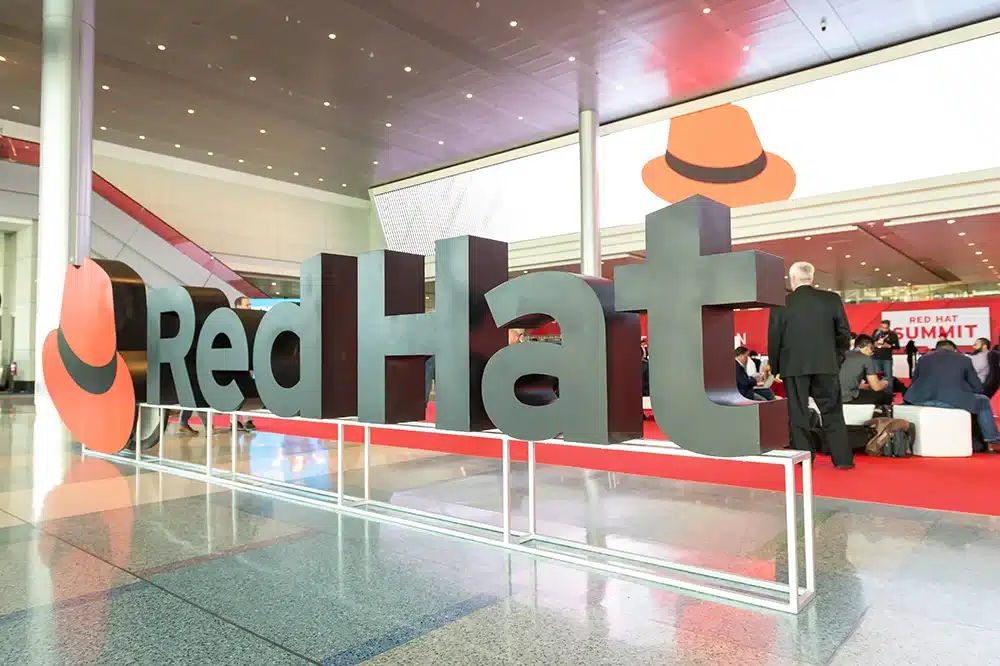The leading provider of open source solutions, Red Hat, has introduced image mode for Red Hat Enterprise Linux. This is a new deployment method that delivers the platform as a container image, adopting a native approach to building, deploying, and managing the operating system, providing a single workflow for managing the IT environment comprehensively.
Evolution of the standard operating environment
For many organizations, a standard operating environment (SOE) or “gold image” based on Red Hat Enterprise Linux forms the foundation of their technology strategies. These images drive hybrid cloud, from the data center to public clouds and the edge, but often need to be customized to meet each company’s specific needs and environment.
Effectively addressing hybrid cloud computing requirements remains crucial. According to Gartner, by 2027, 50% of enterprise workloads will reside outside centralized locations of public cloud. With the rise of AI workloads demanding greater speed and flexibility, the operating system must become more adaptable, scalable, and responsive. To tackle this challenge, Red Hat is incorporating innovations that drive modern application development and container practices at the core of the operating system.
Containers for the “last mile” of IT
Red Hat Enterprise Linux’s image mode is built on the success of open-source projects like bootc to create a deployment model that seamlessly aligns with native container workflows. Image mode allows the operating system to use the same tools, skills, and patterns as containerized applications, enabling operations and infrastructure teams to speak the same language as developers.
Linux is already at the core of containers, but image mode takes Linux’s role a step further by enabling the management of the entire operating system through container-based tools and concepts, including GitOps and continuous integration/continuous delivery (CI/CD). This streamlined approach helps address the challenges of managing Linux at scale, from patching across disparate locations to bridging the gap between operations teams and the application development cycle.
All Red Hat Enterprise Linux users can benefit from increased simplification and portability across all environments that make up the hybrid cloud.
DevOps teams can more easily integrate Red Hat Enterprise Linux into their CI/CD and GitOps workflows, reducing friction between the platform and the application.
Security teams can apply container security tools, from scanning and validation to cryptography and certification of the operating system’s core components, making their work much less complex.
Solution providers can create, test, and distribute applications based on Red Hat Enterprise Linux more easily.
The operating system built for AI
Almost every organization is planning for a future centered around AI workloads or, at the very least, applications with some level of AI capabilities. Red Hat Enterprise Linux’s image mode addresses the need to move faster when it comes to creating, testing, and deploying AI applications, both for its flexible nature and close integration with Podman AI Lab.
Developers can easily create intelligent applications using Podman AI Lab on their laptops through a greatly simplified process thanks to the AI Lab recipe catalogue and the easy AI playground environment. They can then use the bootc extension for Podman Desktop to easily convert to containers, bootable images, or even bare-metal installers, all running on the tried, tested, and consistent backbone of Red Hat Enterprise Linux.
Additionally, Red Hat Insights now offers additional management features to support the immutability of image mode. Operations teams can now view the deployment of operating system images across their entire infrastructure, while administrators can now update image mode systems directly from Red Hat Insights. In the future, image maintainers will also be able to better reinforce their images.
The cloud is hybrid. And so is AI
For over 30 years, open-source technologies have combined speed in innovation with significantly reduced IT costs and lowered barriers to innovation. Red Hat has been leading this trend for nearly the same amount of time, from delivering open enterprise Linux platforms with RHEL in the early 2000s to driving containers and Kubernetes as the foundation of open hybrid cloud and native cloud computing with Red Hat OpenShift.
This momentum continues with Red Hat empowering AI/ML strategies through open hybrid cloud, allowing AI workloads to run where the data is, whether in the data center, on multiple public clouds, or at the edge. Beyond workloads, Red Hat’s vision for AI takes training and model tuning down this same path to better address constraints around data sovereignty, compliance, and operational integrity. The consistency provided by Red Hat platforms in these environments, regardless of where they run, is crucial for sustaining the flow of innovation in AI.

